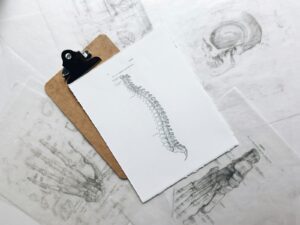Your cart is currently empty!
The Anatomy of a Blog Post for Business Writers

In today’s digital age, having a compelling online presence is crucial for businesses looking to thrive in a competitive market. Among the plethora of digital marketing tools available, the humble blog post remains a powerful weapon in a business writer’s arsenal. However, not all blog posts are created equal. Crafting high-converting content requires careful consideration of various elements that can captivate and engage your audience. So, let’s dissect the anatomy of a successful blog post and uncover the key ingredients for driving conversions.

- Captivating Headline: The headline is your first impression, often the determining factor in whether a reader clicks through to your post. It should be concise, attention-grabbing, and promise value to the reader. Utilize power words, questions, or intriguing statements to entice curiosity and encourage clicks.
- Engaging Introduction: Once you’ve captured your reader’s attention with the headline, it’s essential to hook them with a compelling introduction. This section sets the tone for the rest of the post and should provide a preview of what readers can expect to learn or gain from reading further. Consider sharing a relevant anecdote, posing a thought-provoking question, or presenting a surprising statistic to draw readers in.
Learn How to Write a Blog Post That Grabs and Holds Attention from Copyblogger!
- Clear Structure: A well-structured blog post is easier to read and digest. Break your content into clear sections with descriptive subheadings to guide your readers through the main points. Use bullet points, numbered lists, or bold text to highlight important information and keep your readers engaged.
- Valuable Content: The heart of your blog post lies in the content you provide. Offer valuable insights, practical tips, or in-depth analysis that addresses your audience’s pain points or interests. Back up your claims with credible sources or real-life examples to establish authority and build trust with your readers.
- Visual Appeal: Incorporating multimedia elements such as images, infographics, or videos can enhance the visual appeal of your blog post and break up large blocks of text. Visuals not only make your content more engaging but also help to reinforce key points and concepts.
- Call-to-Action (CTA): Every blog post should include a clear call-to-action prompting readers to take the next step, whether it’s subscribing to your newsletter, downloading a resource, or making a purchase. Make your CTA persuasive, concise, and relevant to the content of the post.
- Optimized for SEO: To maximize your blog post’s visibility and reach, it’s essential to optimize it for search engines. Conduct keyword research to identify relevant terms and incorporate them naturally throughout your content, including in the headline, introduction, and body. Additionally, optimize meta tags, alt text for images, and internal linking to improve your post’s SEO performance.
- Engagement and Interactivity: Foster engagement with your audience by encouraging comments, questions, and social shares. Prompt readers to share their thoughts or experiences related to the topic discussed in the post, and be sure to respond to comments to keep the conversation going.
- Mobile-Friendly Design: With an increasing number of users accessing content on mobile devices, ensure that your blog post is optimized for mobile viewing. Choose a responsive design that adapts seamlessly to various screen sizes, and avoid using large images or heavy scripts that could slow down load times.

Analytical Insights: After publishing your blog post, monitor its performance using analytics tools to gain insights into its effectiveness. Track metrics such as page views, bounce rate, time on page, and conversion rate to understand how well your post resonates with your audience and identify areas for improvement.
15 Amazing Blogging Insights Your Analytics Can Tell You
In conclusion, crafting high-converting blog posts requires careful attention to detail and a strategic approach to content creation. By incorporating these key elements into your writing process, you can create blog posts that not only attract readers but also drive meaningful engagement and conversions for your business. Remember, quality content is the cornerstone of a successful digital marketing strategy, so invest the time and effort to make every blog post count.
RECOMMENDED READING
Use Copywriting Frameworks to Unlock the Power of Persuasion and Captivate Your Audience!


